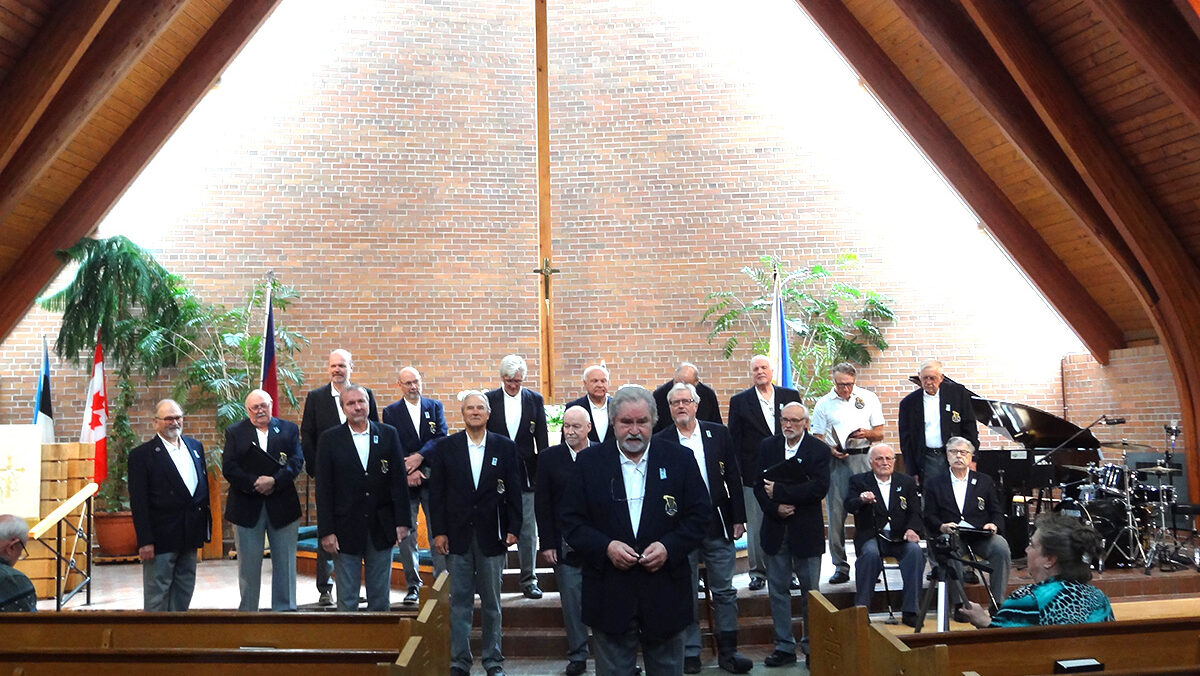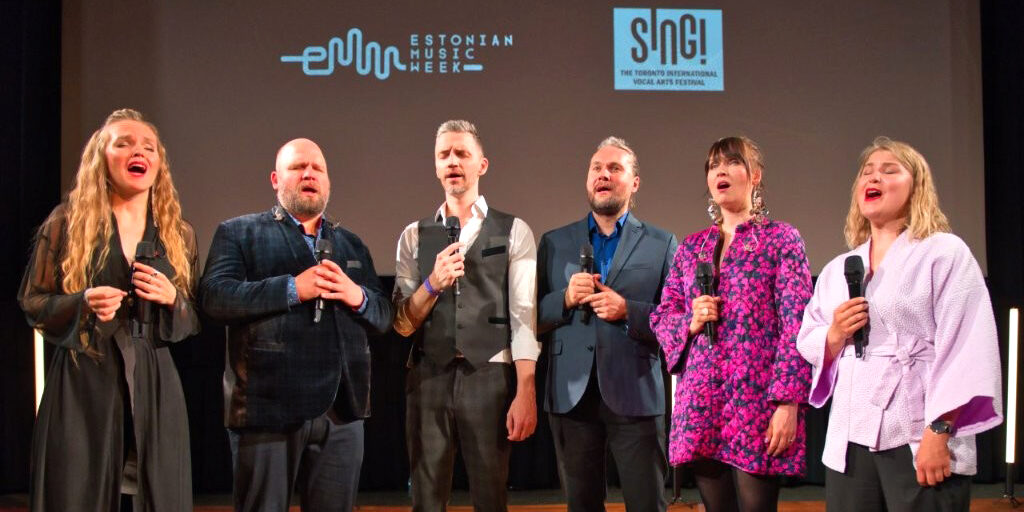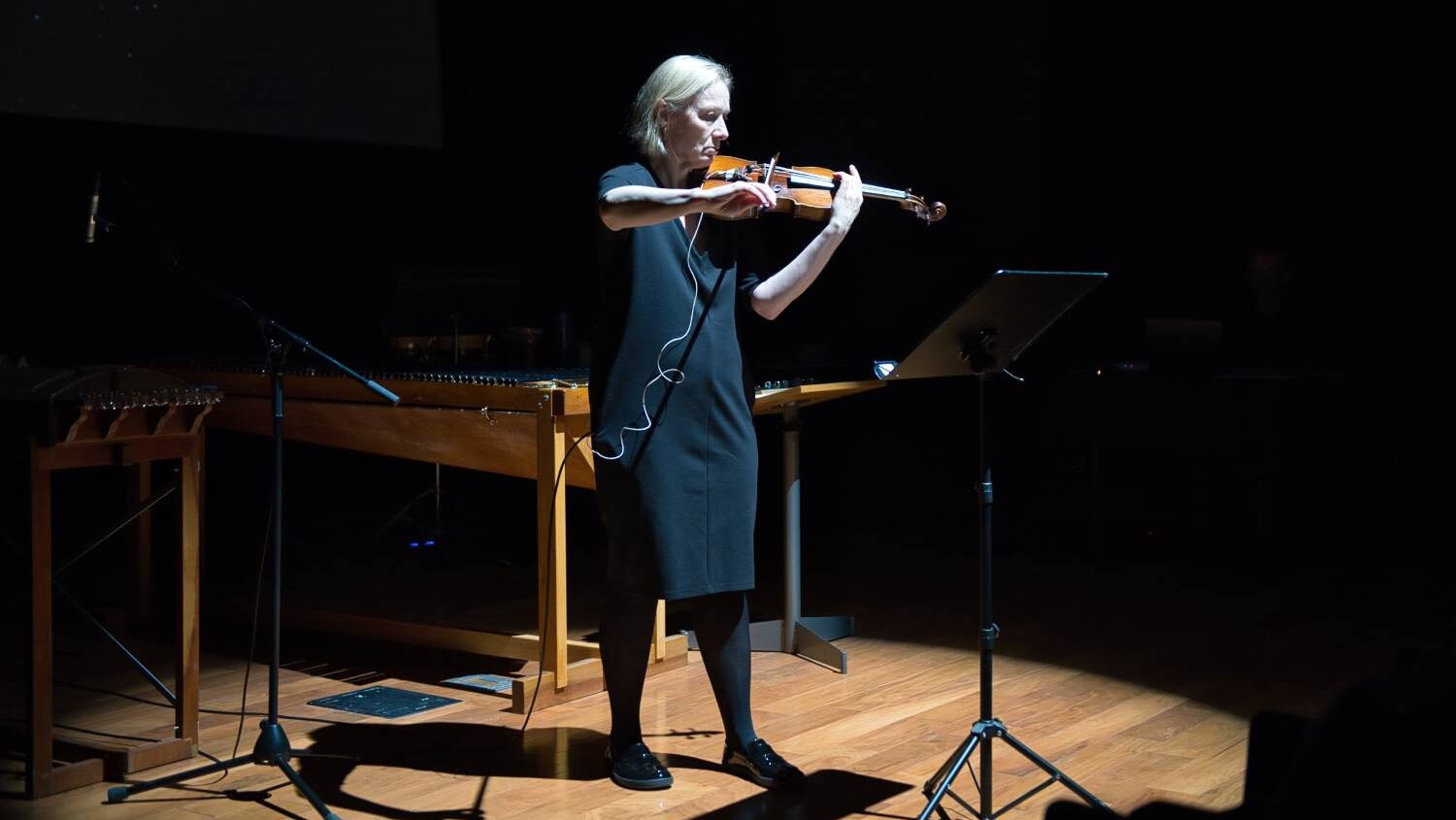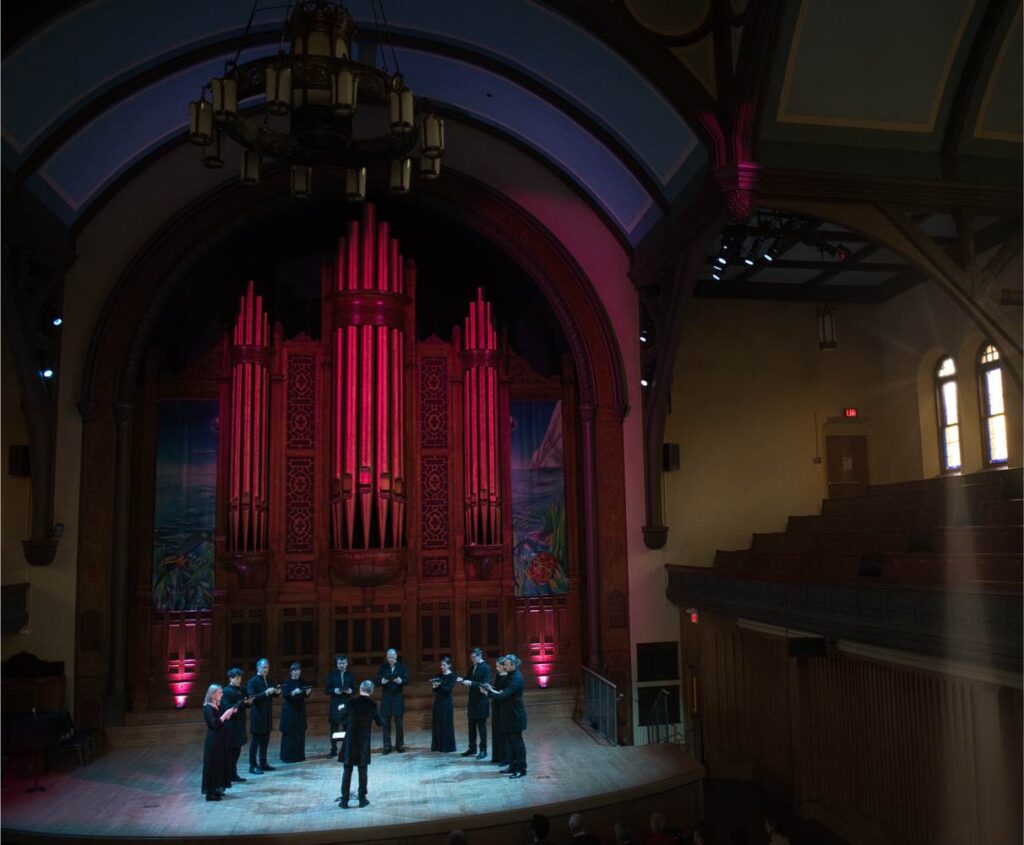
Over a dozen pre-festival and festival events, attendees were given access to the very best of what is arguably Estonia’s primary cultural export—music. And the sheer range of what was on offer gave people a chance to really nourish their hearts and souls.
It started simply at first, with a choir workshop led by Jaan-Eik Tulve, conductor of Vox Clamantis, in the main hall of Tartu College on Wednesday May 21st. Gathered around him, singers from the local community were encouraged to exercise their voices and be immersed in the kinds of techniques applied by the Grammy-winning choir. Later that evening, another opportunity to freely participate opened up at DROM Taberna, with a jam session led by Hypnosis Negative. DROM is unique in that on any given night, patrons play, sing, dance, and socialize so freely without restrictions.
The night started with Katariina Tirmaste and Alan Mackie presenting their artistic trademark of a merry melody that begins to amble along in unison. Before long, the drums and a bass synth of their bandmates kicked in and more and more musicians approached the stage with fiddles, flutes, a bagpipe, their voices, and percussion. Estonian folk standards and new compositions were inverted with unexpected rhythms. Dancers twirled at the front. At one point, a tap dancer brought a board on stage to dance on, causing Alden Kirss, singer and rhythm guitarist of The Crosslegs, to remark “I’ve never seen anything like this!”
Even as rain drizzled over Toronto, the playfulness of it all couldn’t be snuffed out…
The official launch of the festival was to take place the following day, however. On May 22nd, the Gardiner Museum opened its top floor for important guests of the festival, those involved in the Nordic Connect Conference (NCC), and artists from near and far. The setting was ideal, given the centrality of the museum on the Bloor St. Culture Corridor and the dramatic window-view of the ROM. While mingling and sampling delectable hors d’oeuvres, guests were treated to short sets by Al Qahwa (an NCC participant and smooth players of music from across the Arabic-speaking world), Curly Strings, and Mart Avi. Even as rain drizzled over Toronto, the playfulness of it all couldn’t be snuffed out, as evidenced by Mart Avi coming on stage with a red umbrella.
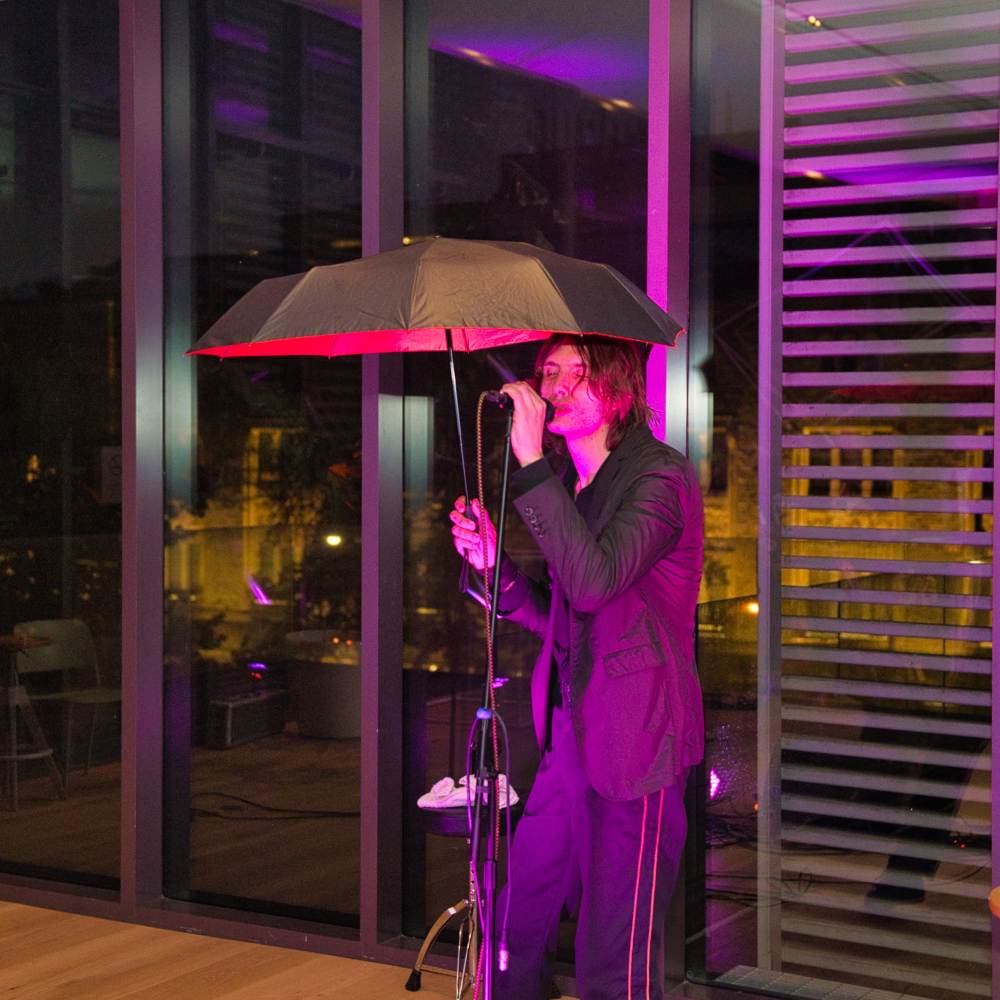
Meanwhile, the question on everyone’s lips was “Are you going to Salakõrts after?” That same night, Division 88 in the understated musical hub of Geary Lane was to host a Secret Saloon, just like at ESTO festivals of years gone by. With listeners drifting in through Hopp rideshares, Now In Service rocked through several sets of their originals and party hits of the last few decades. The energy never waned, especially as bassist Indrek Kanne and singer/keyboardist Paul Kako slipped through the crowd with high power bass grooves and vocal hooks. Ample room was needed for the folks boogying and dancing the polka at the front.
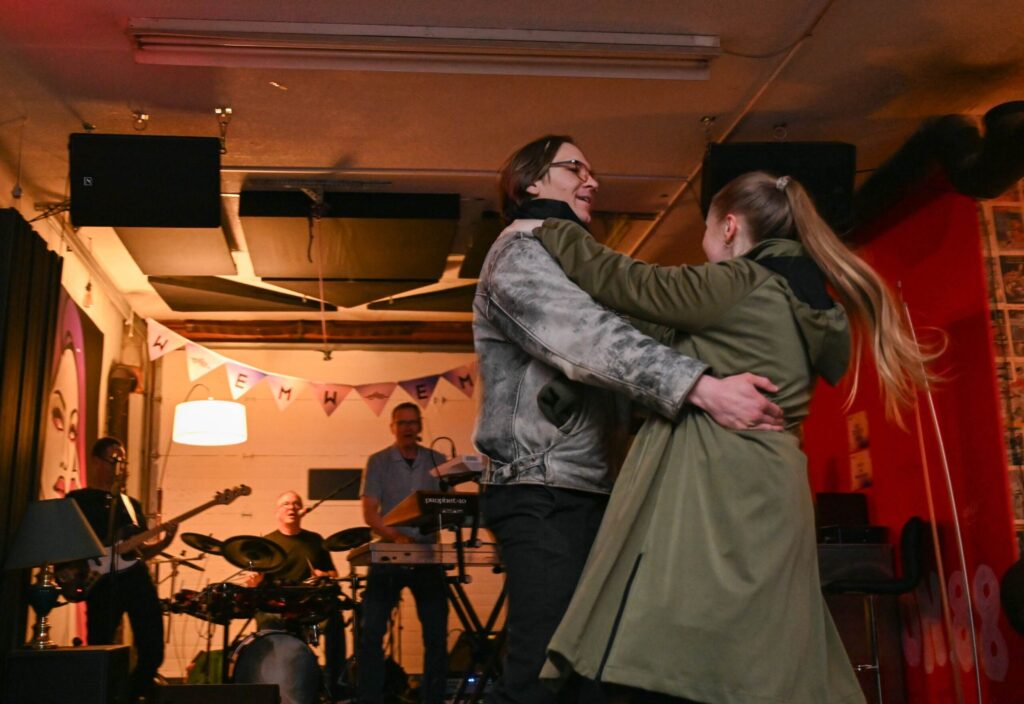
At the same time, throughout the duration of EMW, the festival’s Nordic Connect Conference was successfully strengthening relationships on creative and business levels between Canadians and Europeans.
Speaking of hooks and grooves, the initial days of EMW were definitely the ones most focused on what might be considered “pop songwriting,” even if within a folk or other genre context. The pin was dropped on Revival on College Street for Friday May 23rd, which, true to its name and history as a church, was almost overflowing with excited audiences. Under cozy lanterns, The Crosslegs delivered songs with poetic nuances, rhythmic complexity, and flute lines that create a fresh sound, beyond the Irish associations typically made with their music. It was a special first performance in North America for all of them, and a homecoming for Alden Kirss who was born in Toronto.
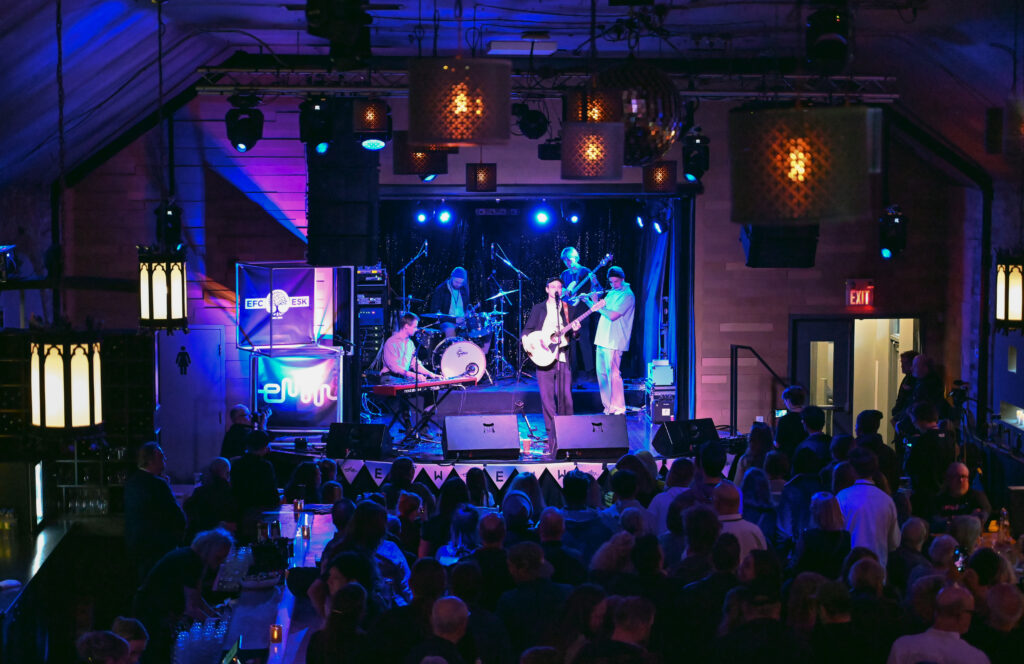
In between, Les Rats d’Swompe shook the floorboards with their hard rock varnished Franco-Ontarian fiddle folk. Dressed in lumberjack plaid behind beer keg mic stands, it might have been one of the most Canadian sights audiences have ever beheld. And at the apex of the night (prior to an after party with dub-punk Slavic folksters Dumai Dunai at DROM, of course) was Curly Strings.
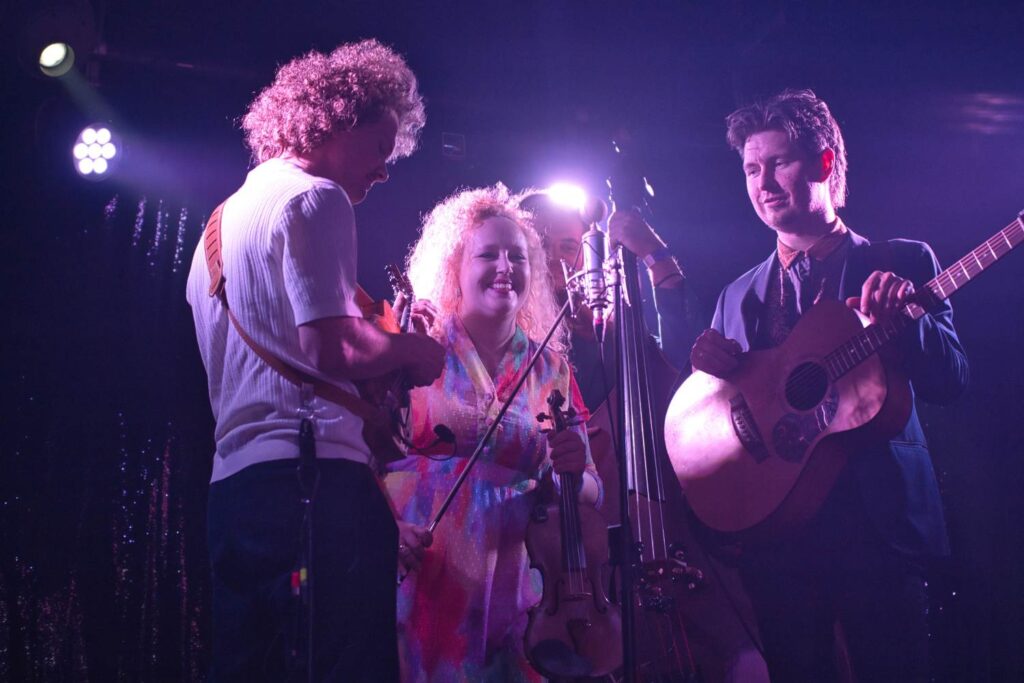
As one of the biggest bands coming from Estonia, Curly Strings always draws a strong crowd, and each person was one hundred percent committed to listening. Singing, too, if the quartet asked for it, and plenty of call-and-response was heard. In their most sensitive moment, they sang the devastating and poignant occupation story of “Mind nad kätte ei saa” (“They Won’t Catch Me”), releasing a tear of memories in many people there.
The afternoon of Saturday May 24th had a special singing angle, when a cappella groups Countermeasure and Estonian Voices flowed charismatically through vocal numbers of their own creation and a few covers. The relaxed Innis Hall theatre was ideally suited to this show (as well as the Ensemble U: performance the next day), giving fertile ground for inner-song jokes—like bringing The Proclaimers’ “500 Miles” in line with the metric system—and participation, like when singer Kadri Voorand invited each audience member to hug or kiss, or to voice their preferred animal noise.
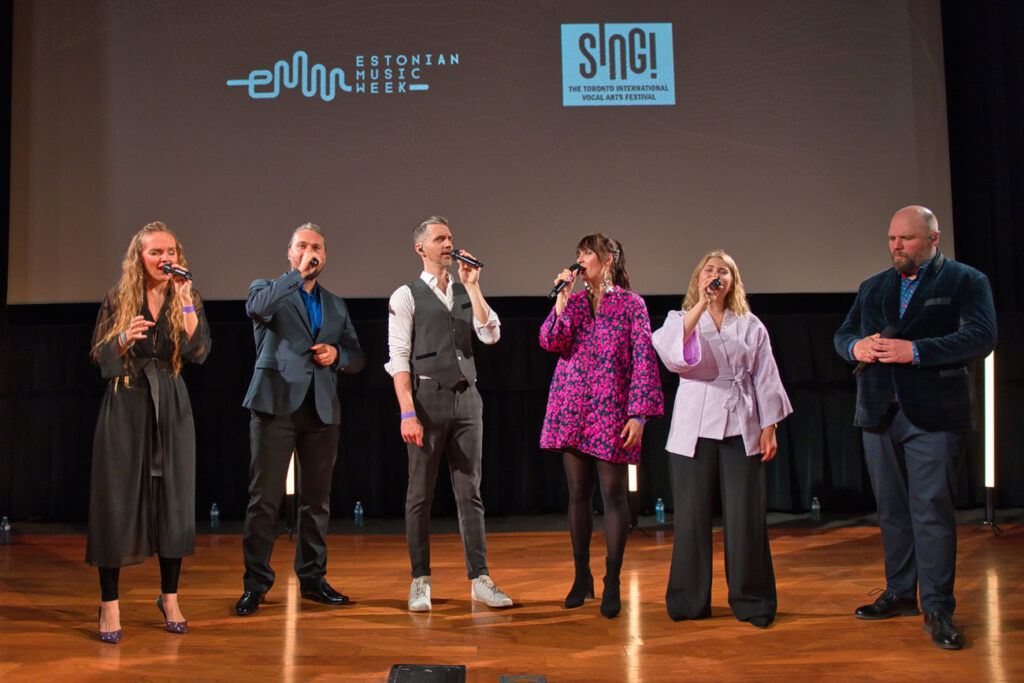
Still, levity wasn’t the only thing on the bill: Estonian Voices’ cover of the Curly Strings song “Kättemaks” (“Revenge”) shows the aftermath of infidelity like no other. The highlight of Countermeasure’s set had to be Joe Hisaishi’s “One Summer’s Day”, an achingly beautiful song from the Studio Ghibli film Spirited Away.
Projections on the back wall created the right atmosphere, as all four acts are true soundscape architects.
Within a few hours, St. Anne’s Parish Hall was the stage of two back-to-back shows: Tuulikki Bartosik x Sander Mölder and Caracol, followed by Mart Avi and One Hundred Moons. Projections on the back wall created the right atmosphere, as all four acts are true soundscape architects. For Tuulikki Bartosik x Sander Mölder, the set was an act of international travel. Accordion, synths, kannel (zither), and singing whisked us through important places in Tuulikki’s life. At the end of the night, One Hundred Moons were transportive in a raw way, with heavy drums and instrumental effects that cracked through to another realm.
In between, Caracol and Mart Avi infused their shows with discotheque pulsations. Both are particularly talented at lifting the room up with their live presences. For Caracol, the sonic landscape was shaped by a sunny presence, aligning with her work as a reggae singer. For Mart Avi, it’s mystery and intrigue, as he saunters across the stage (which, owing to the music, could have easily been replaced with a Milan Fashion Week runway), swinging from beat to beat.
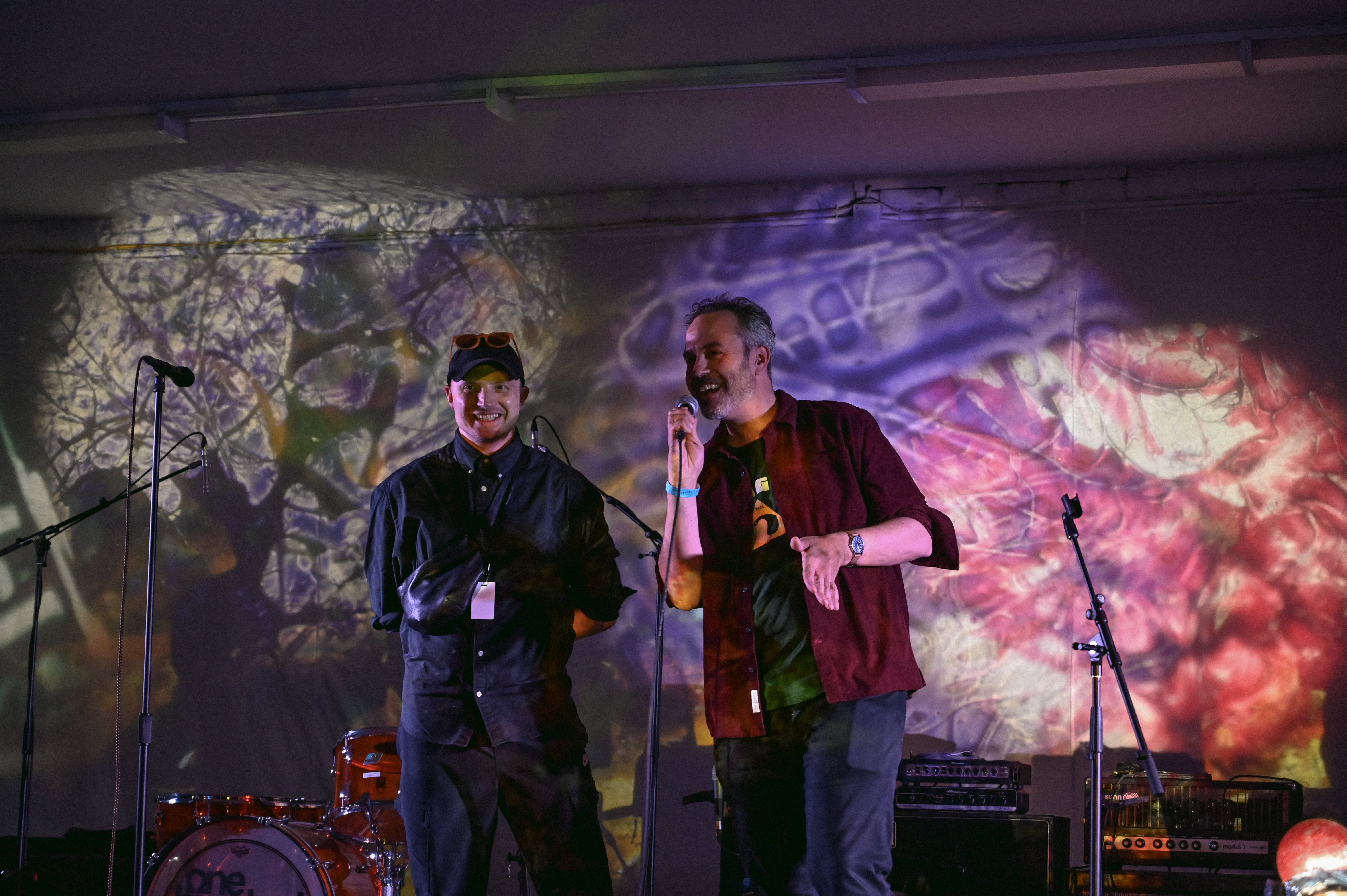
During the festival, the whole of downtown Toronto (especially on Bloor Street) felt like it had become Estonia, certainly the closest to Estonia you’d get in North America. Not only that, four Estonian groups performed (three with sold-out concerts) at the prestigious National Arts Centre in Ottawa, further spreading the influence of Estonia. Apart from the concerts themselves, on numerous occasions, one could bump into and chat with the musicians on the streets around Tartu College and the U of T campus, which was a pleasant add-on.
But this feeling of being in Estonia came to a head on Sunday May 25th, when the intersection of Bloor Street and Madison Avenue was the site of a Külasimman (Village Party), running at the same time as Doors Open. Welcoming to all, the Külasimman attracted crowds for crafts and art for sale, a sauna, food, embroidery, folk dancing… and music, naturally! Doors Open visitors saw VEMU Estonian Museum Canada and took part in Erik Laar’s DJ workshops.

A sudden torrential downpour forced everyone inside part-way through the performance of songwriter and educator Tiiu Strutt, but if anything, it brought everyone together even more for the performances by Tiiu, TERR Kungla, a choir (with members from Estonia Koor, Toronto Eesti Meeskoor, and TEAS Ööbik), and Curly Strings. This article’s author would add that the audience was delightfully receptive to his band, Blumarelo, after winning the opportunity to play at the Külasimman and the next festival during EMW’s first ever Rising Star Showcase competition in the week prior to the festival.
… augmented reality visuals provided for people’s smartphones and unfamiliar sounds fast-tracked one to the genuinely therapeutic state of listening to Ensemble U:… nothing was the same after watching this.
Late afternoon saw a return to Innis Hall for Ensemble U: to play “Timetrip to Big Bang and Back,” which was made possible due to the generous support of Alan Teder, in memory of his piano and music theory teacher, the cycle’s composer, Udo Kasemets. It took a few moments after sitting to stretch out and loosen up one’s brain, so to speak, but the augmented reality visuals provided for people’s smartphones and unfamiliar sounds fast-tracked one to the genuinely therapeutic state of listening to Ensemble U:. Between droning violin, gongs, bowed cymbals, finger-tapped tom toms, and the Columbine and Amaranth instruments invented by Gayle Young, nothing was the same after watching this.
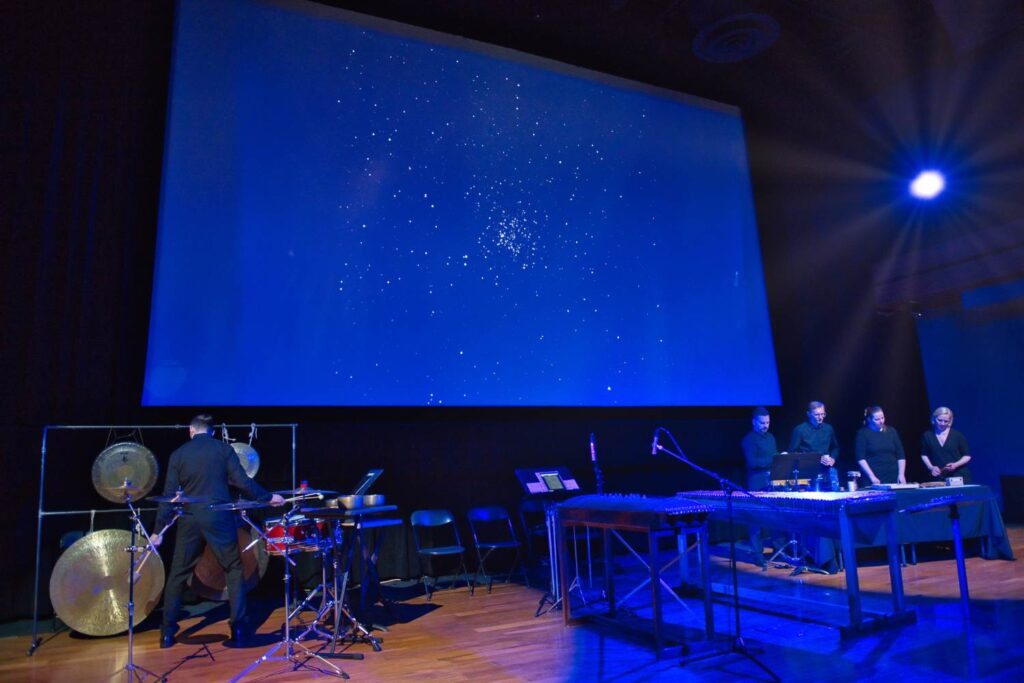
Which brings us to the finale of the festival—Vox Clamantis at Trinity-St. Paul’s. Here, Gregorian chant stood alongside compositions by Arvo Pärt, Lembit Avesson, Veljo Tormis, Helena Tulve, and a premiere of “Kõik inglid taeva valguses” (“All Angels in the Light of Heaven”) by Toronto-raised composer Riho Esko Maimets. As the dusk light poured in through the windows, one could meditate and imagine the tribulations and tender hope of humanity in the blending of each singer’s voice.
The festival unleashed such an expanding universe of music and human creativity that one is now left to relish in a warm, uplifted, hopeful feeling for the future. If art continues to be made, if artists keep doing what they do, we have much to be hopeful for.
